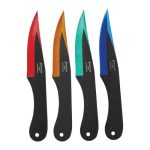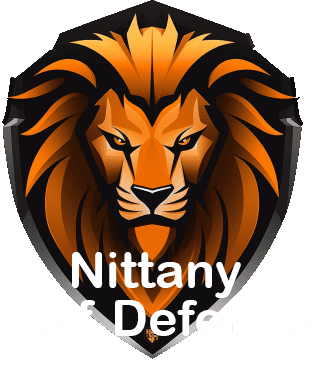Accessible Strategies And Practical Tools
Self defense doesn’t need to be complicated. Think of it as untangling a knot – intricate at first glance, but with a patient approach, it can be simplified. And you will be surprised to discover that protecting yourself doesn’t have to involve complex maneuvers or specialized skills.
There’s a straightforward path to feeling more secure in your daily life. One that doesn’t require Herculean effort or endless training sessions. By uncovering accessible strategies and practical tools. Allowing you can empower yourself to navigate potential threats with confidence and ease.
Key Takeaways
- Master basic striking and defense techniques for effective self-defense.
- Enhance situational awareness to prevent and respond to threats.
- Utilize everyday objects as self-defense tools for added protection.
- Access virtual self-defense training for comprehensive skill development.
Basic Self Defense Techniques
When faced with a threat, a quick and effective way to protect yourself is by learning basic self-defense techniques. Simple techniques can make a significant difference in a dangerous situation. And one of the most effective strategies is mastering the art of striking. By knowing how to deliver a powerful punch or kick to the vulnerable areas of an attacker, you can gain the upper hand and create an opportunity to escape.
Additionally, practicing basic blocks and parries can help you deflect incoming attacks and create openings for counterattacks.
Another essential skill to learn is how to break free from grabs and holds. Simple techniques like wrist releases, elbow strikes, and knee strikes can be incredibly effective in freeing yourself from an attacker’s grasp. By combining these techniques with situational awareness and quick thinking, you can increase your chances of staying safe in threatening situations.
Situational Awareness Tips

Self defense doesn’t need to be complicated. Enhance your safety by honing your situational awareness skills. Personal safety should always be a top priority, and being aware of your surroundings can greatly reduce your risk of becoming a victim. Here are four vital tips to help you improve your situational awareness and conduct effective risk assessments:
- Stay Alert: Avoid distractions like using your phone or wearing headphones when walking alone. Being alert allows you to notice potential threats in advance.
- Trust Your Instincts: If something feels off or makes you uncomfortable, trust your gut instincts. It’s better to be safe than sorry.
- Scan Your Environment: Continuously scan your surroundings, looking for any unusual behavior or suspicious individuals. Being aware of your environment can help you spot potential dangers.
- Plan Your Exit: Always have an exit strategy in mind, especially in unfamiliar or crowded places. Knowing how to leave a situation quickly can be vital for your safety.
In the each of the pictures above, a woman is standing in front of an ATM machine. But the woman pictured in the lower right corner is being vigilant and paying attention to her surroundings. A good example of situational awareness.
Watch a short, but informative video about situational awareness by clicking here.
Everyday Self Defense Tools
To effectively equip yourself for self-defense in everyday situations, consider the usefulness of common items as tools for protection. Everyday tools like a sturdy keychain, a whistle, or a tactical flashlight can be invaluable in threatening situations. A keychain can be used to strike an attacker’s vulnerable areas, a whistle can attract attention and deter assailants, while a tactical flashlight not only illuminates dark areas but can also be used to temporarily blind an aggressor, allowing for a quick escape.
Again, self defense doesn’t need to be complicated. In addition to these tools, everyday objects like pens, umbrellas, or even a water bottle can also serve as makeshift weapons in times of need. A pen can be used to jab at an attacker’s eyes or throat, an umbrella can be wielded for both defense and distraction, and a water bottle can be thrown to create a diversion for a swift getaway.
Low Cost Self Defense Weapons


In addition to the everyday self defense tools mentioned above, you can purchase highly-effective, low-cost weapons from online stores such as nittanyselfdefense.com. Choose practical and user-friendly weapons such as pepper spray and stun guns. Or more exotic weapons such as steel batons and high-quality knives (both pictured above).
Self Defense for Vulnerable Populations
Consider how individuals from vulnerable populations can adapt everyday objects for self-defense in threatening situations. Empowerment through self-defense is key for everyone, especially for those in vulnerable groups. Here are some practical strategies for safety that can make a real difference:
- Keychain Alarm: Attach a keychain alarm to your bag or keys. In case of an emergency, activate the alarm to attract attention and scare off potential attackers.
- Personal Safety Whistle: Carry a loud whistle with you at all times. It can help draw attention to your situation and deter aggressors.
- Flashlight: A small but powerful flashlight can be used to disorient an attacker or signal for help in dark or dimly lit areas.
- Pencil or Pen: Keep a sturdy pencil or pen accessible. It can be used as a makeshift weapon to defend yourself if needed.
Self defense doesn’t need to be complicated. Even for vulnerable populations. Self-defense tactics and utilizing everyday objects for protection can provide a sense of security and preparedness in potentially dangerous situations.
Self Defense Training Resources
Looking for effective self-defense training resources to boost your skills and confidence? In today’s digital age, virtual self-defense training has become increasingly popular. One reason why self defense doesn’t need to be complicated is because online courses offer a convenient and accessible way to learn essential self-defense techniques. From the comfort of your own home.
Virtual self-defense classes are designed to equip you with the knowledge and skills needed to protect yourself in various situations. These online courses cover a wide range of topics, including basic self-defense moves, situational awareness, de-escalation techniques, and more. With step-by-step instructions and video demonstrations, you can learn and practice at your own pace.
One of the key benefits of virtual self-defense training is the flexibility it offers. You can access the courses anytime, anywhere, making it easier to fit training into your busy schedule. Additionally, online courses often provide interactive elements, such as live virtual sessions or forums, where you can engage with instructors and fellow participants.
Whether you’re a beginner looking to build a solid foundation in self-defense or a seasoned practitioner wanting to enhance your skills, virtual self-defense training resources can help you achieve your goals effectively and efficiently. Remember, self defense doesn’t need to be complicated.
Frequently Asked Questions
How Can Self Defense Techniques Be Adapted for Individuals With Physical Disabilities?
When adapting self-defense techniques for physical disabilities, focus on adaptive techniques and inclusive training. Modify movements to suit your abilities. Emphasize situational awareness and leverage your strengths. Remember, self-defense is about empowerment and personal safety, tailored to your needs.
Are There Specific Self Defense Tools Designed for Children to Use in Dangerous Situations?
When it comes to child friendly self defense tools, there are various options available that cater to their needs. Safety awareness programs also play an essential role in equipping children with the knowledge to handle dangerous situations effectively.
What Are Some Common Misconceptions About Self Defense That People Should Be Aware Of?
Common misconceptions about self-defense may lead you to believe it’s all about physical strength or fancy moves. In reality, effective strategies focus on awareness, de-escalation, and using your surroundings to stay safe.
How Can Someone Effectively Defend Themselves Against Multiple Attackers?
When facing multiple attackers, adapt techniques to handle each threat individually. Use tactical strategies like keeping distance, staying aware of surroundings, and looking for opportunities to escape. Practice situational awareness and prioritize your safety.
Are There Any Legal Considerations to Keep in Mind When Using Self Defense Techniques in a Real-Life Situation?
When using self-defense techniques in real-life situations, it’s important to understand legal considerations and ethical boundaries. Knowing when and how to defend yourself within the confines of the law is essential for your safety.
Conclusion
You’ve learned that self defense doesn’t need to be complicated. Or difficult. By practicing basic techniques, staying aware of your surroundings, and using everyday tools, you can better protect yourself.
Just like a sturdy umbrella in a sudden rainstorm, self defense is a valuable skill to have in your arsenal for staying safe in any situation.
Stay informed, stay prepared, and stay safe.


